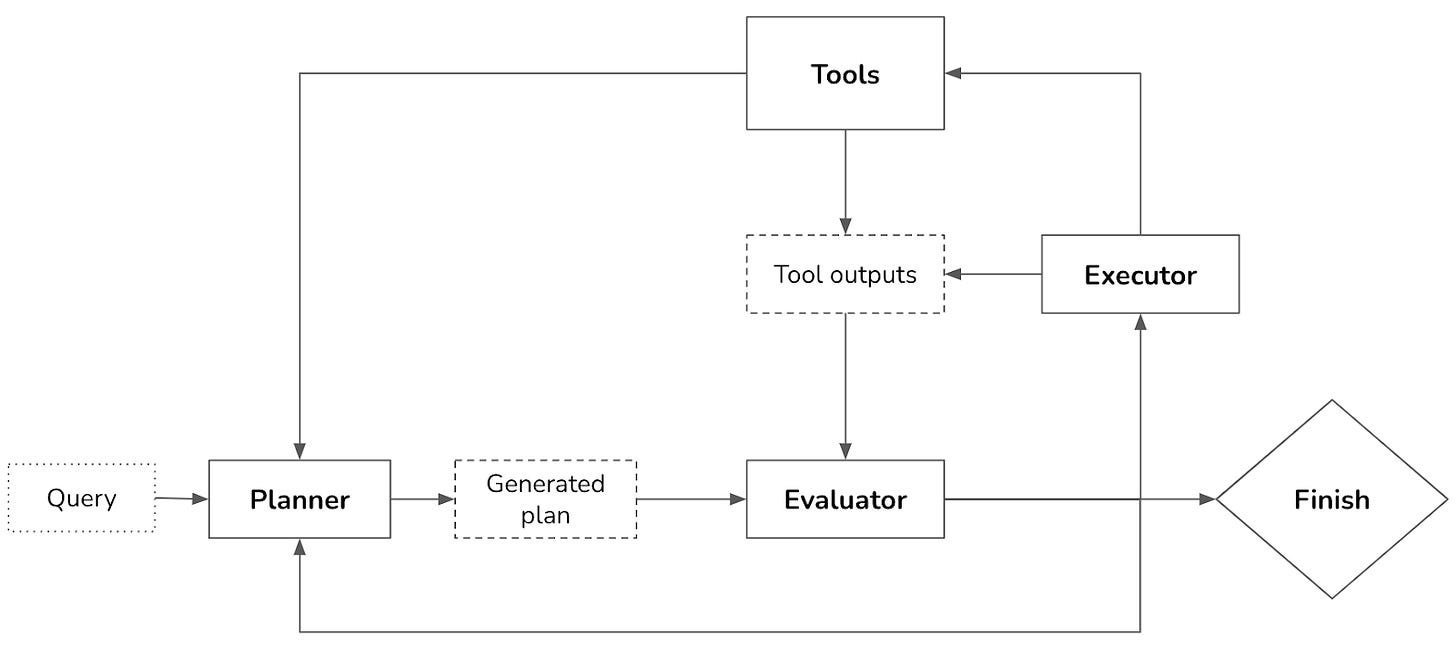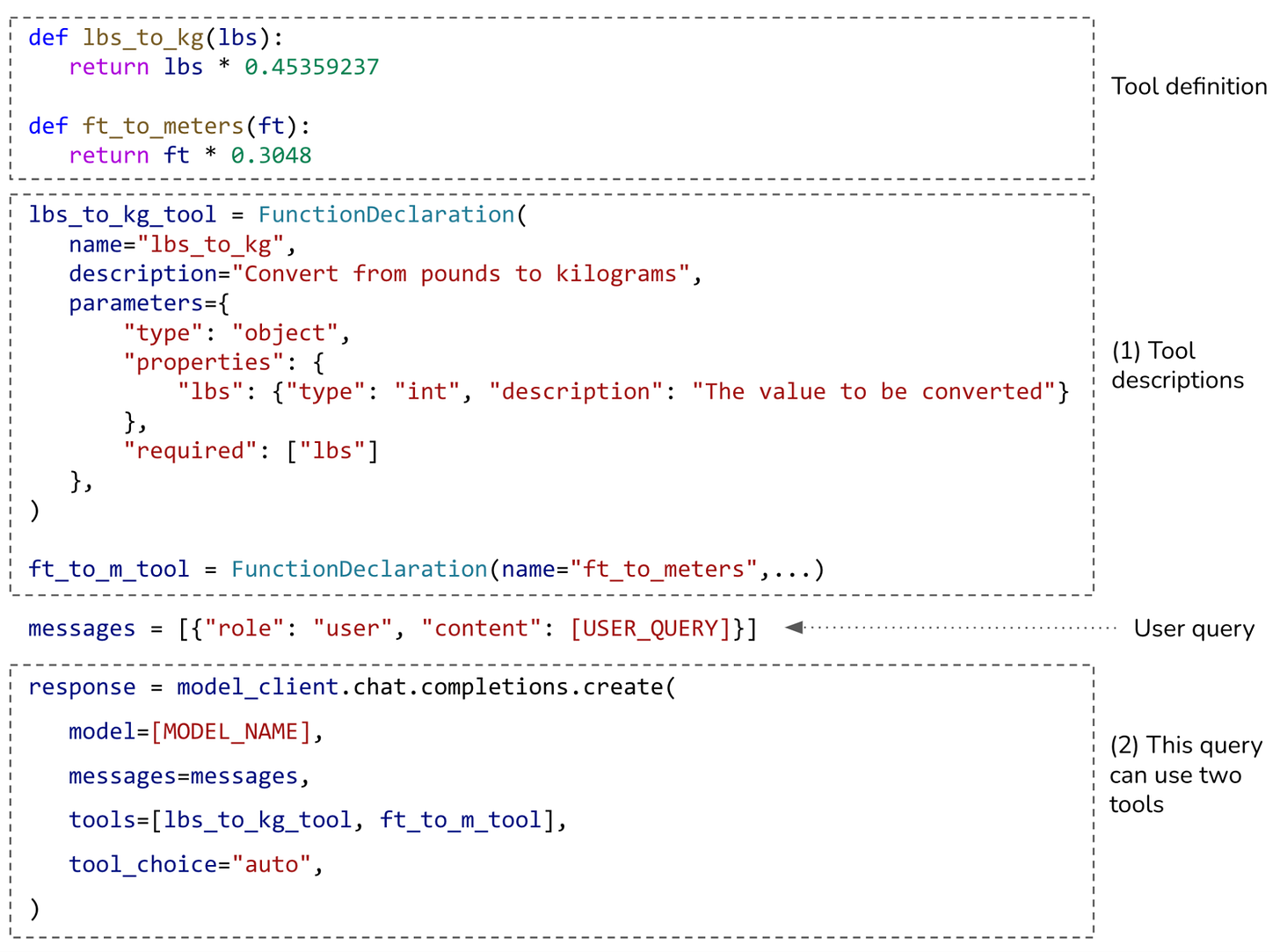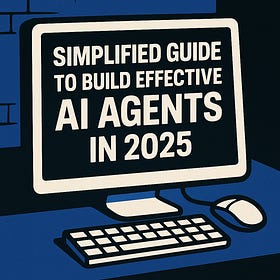AI Agents in 2025: Technical Insights and Frameworks
What’s under the hood of today’s most capable AI Agents? Let’s break it down 📃
AI agents aren’t just a buzzword anymore! they’re doing real work. From scraping the web to managing business ops, agents are moving from “cool demo” territory into production-ready tools. And 2025? It’s the year these systems start running entire workflows, not just answering questions.
This post is inspired by one of the best breakdowns on the topic, Chip Huyen’s take on AI agents (from her “Agents” write-up). If you're building, learning, or scaling in this space, here’s what you need to know.
What’s an AI Agent Anyway?
Chip keeps it simple: AI agents are systems that combine tools + planning to pull off multi-step tasks.
Unlike basic chatbots, they can:
Perceive and Act: Interact with the outside world (think APIs, browsers, databases).
Plan and Reason: Work through goals with multiple steps.
Learn and Adapt: Use feedback, memory, and smart flows to get better.
It’s a shift from passive LLMs to agents that act, plan, and solve. Think of it as the jump from “respond to prompt” to “handle the task.”
What Makes Agents Tick: The Tech Stack
Chip breaks agents down into two core pillars:
1. Tools
These are the functions your agent can call:
Search APIs: Google Search, Bing, etc.
SQL Executors: Pull data from databases.
Web Browsers: For navigation and scraping.
Code Generators: Write and run custom code.
2. Planning Ability
This is what decides which tools to use and in what order:
Chain-of-Thought Reasoning: Break a task into logical steps.
Reinforcement Learning (RL): Learn what action leads to success.
Control Flows: Run tasks in sequence, loops, or parallel.
Example: Let’s say your agent needs to answer “What’s the average price of best-selling products?”
It might:
Search for best-sellers (search tool).
Extract prices (scraping tool).
Calculate the average (math tool).
But… if the query is vague, the agent could mess up (hallucinate), calling the wrong tool or passing bad params. That’s still a challenge in 2025.
How to Actually Build an AI Agent
Here’s where things get real. If you want an agent that works beyond toy examples, you need to:
Choose the Right Tools
Pick APIs and plugins that match your domain. A support agent might need access to your CRM and docs. A dev agent? GitHub + terminal.
Improve the Planning
Use things like:
Prompt Engineering: Guide the agent clearly.
Context Augmentation: Feed in useful data.
Feedback Loops: Let it learn from its mistakes.
Test Like Crazy
Most agents fail because:
They misuse tools or screw up the logic (Task Failure).
The sub-steps work, but the final result is wrong (Composability Gap).
So yeah, unit tests for each tool and integration tests for the whole thing are a must.
Quick Example: LangChain Agent
Want to try a real one? Here’s a mini LangChain agent in Python that uses search + math tools:
from langchain.agents import load_tools, initialize_agent
from langchain.llms import OpenAI
llm = OpenAI(temperature=0)
tools = load_tools(["serpapi", "llm-math"], llm=llm)
agent = initialize_agent(tools, llm, agent="zero-shot-react-description", verbose=True)
result = agent.run("What’s the population of New York City in 2025?")
print(result)That’s a simple agent with tool access + basic planning. LangChain handles most of the glue for you.
Real-World Case Studies
1. Fujitsu’s Kozuchi
Use: Automates business decisions (like profit analysis).
Stack: Knowledge graphs + GenAI + human collaboration.
Impact: Already streamlining enterprise ops; heading toward production workflows.
2. Replit Agent
Use: Turns natural language into apps.
Stack: Code gen, dependency handling, deploy logic.
Impact: Let’s non-techies build actual apps. Wild.
3. OpenAI’s Operator
Use: Automates tasks by navigating websites (e.g. booking tickets).
Stack: Browser agent + RL planning.
Impact: Helps non-technical users complete web tasks, but still has a long way to go.
What’s Next for Agents in 2025?
This space is moving fast. Here are 3 big trends to watch:
Voice-first Agents: Tools like VoiceOS are leading a shift from text to speech.
Multi-Agent Systems: Think swarms of agents working together, from warehouse logistics to smart simulations.
Small Language Models (SLMs): Personalized, local agents that are cheaper, faster, and privacy-safe.
📈 Market forecast? $5.1B → $47.1B by 2030. It’s not just hype, it’s happening.
What’s Still Hard?
Let’s not pretend agents are magic. Here’s what’s still tricky:
Hallucinations: Agents still invent steps or tools if the prompt is ambiguous.
Reliability: Getting an agent to perform well across a range of tasks consistently is tough.
Ethics: More autonomy = more risk. Oversight matters.
Wrapping It Up
AI agents in 2025 aren’t just LLMs with fancy wrappers. They’re full systems with toolkits, planning logic, and real-world impact.
Want to build one? Start with Chip Huyen’s framework, it nails the basics. The rest is experimentation, iteration, and building smart systems that think before they act.
📚 Want to learn more?
How to Create Effective AI Agents
In 2025, building AI agents isn't just about connecting a Large Language Model (LLM) to some tools and calling it a day.
Let’s keep building smarter agents because this is just the beginning.
If you liked this post of AI Agents Simplified, share it with your friends and spread the knowledge! ❣️










https://open.substack.com/pub/harshithviswanath/p/perplexity-launches-perplexity-patents?utm_source=share&utm_medium=android&r=4y4gfu
Great breakdown of AI Agents. In vogue, hugely misunderstood.